Ask Your Therapist
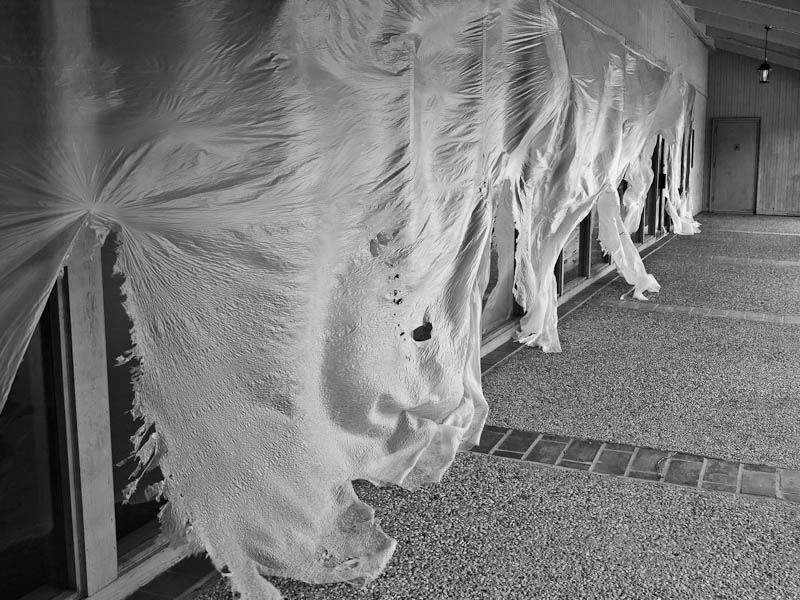
Plastic Wrap
You wil have to ask your therapist what this signifies, I have not been able to figure it out yet.

Plastic Wrap
You wil have to ask your therapist what this signifies, I have not been able to figure it out yet.
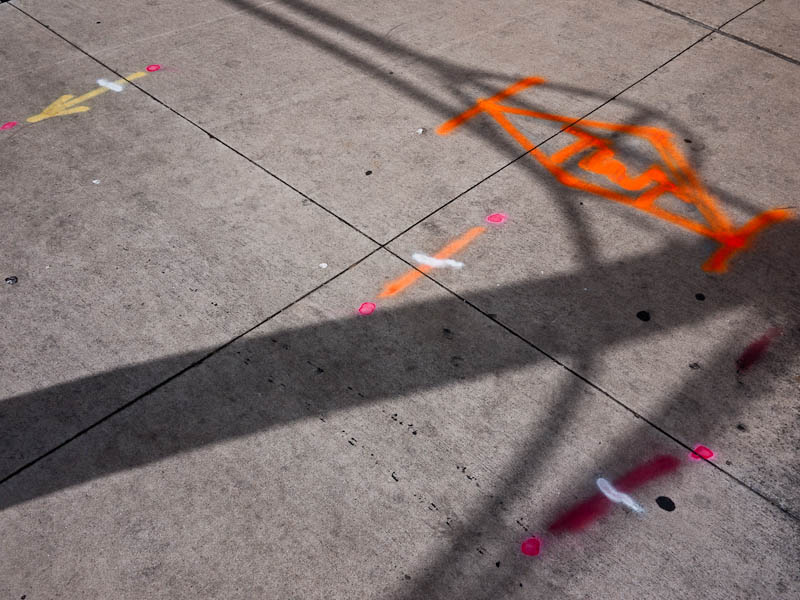
Urban Crop Circles
In the 1970’s, aliens tried to coordinate their invasion of our planet by marking farmer’s fields with hieroglyphics that only they and Led Zeppelin could understand. In the first part of the twenty first century they have begun marking their lines of attack for urban street fighting; their glyphs are smaller now, and more colorful, but no easier to comprehend.
That’s one interpretation. The more likely explanation is that Austin’s streets are about to be torn up yet again to lay a new cable or fix an old sewer line.
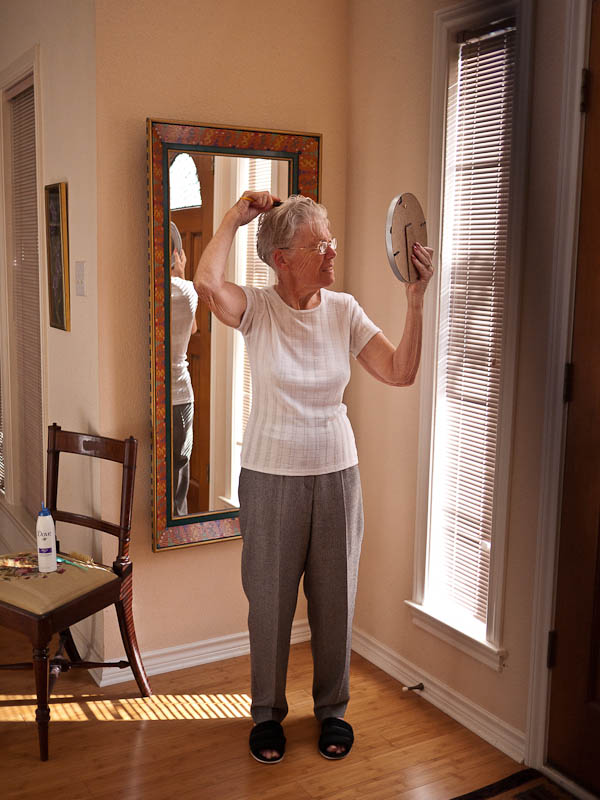
Getting the Hair Right
Today is my birthday but, with the amused permission of my wife, I awarded myself a present a few days early last Saturday: a Panasonic GF1.  I wanted something smaller and less obtrusive than my Nikon D300 for use on the street; something I could take on my lunch time exercise walkabout without bruising my hip as I went, and yet at the same time giving me full control and quality results. I wanted a digital version of my old Leica M6 without paying the $7,000 dollars that an M9 runs. I’ll write at more length about my experience with the GF1 after I have been using it for a week or so but so far it has met my expectations and has been a delight to use.
I wanted something smaller and less obtrusive than my Nikon D300 for use on the street; something I could take on my lunch time exercise walkabout without bruising my hip as I went, and yet at the same time giving me full control and quality results. I wanted a digital version of my old Leica M6 without paying the $7,000 dollars that an M9 runs. I’ll write at more length about my experience with the GF1 after I have been using it for a week or so but so far it has met my expectations and has been a delight to use.
Above is an available light shot of me old mum getting her hair straight; when you have a new camera burning your fingers you will shoot anything but I am pleased with the result.
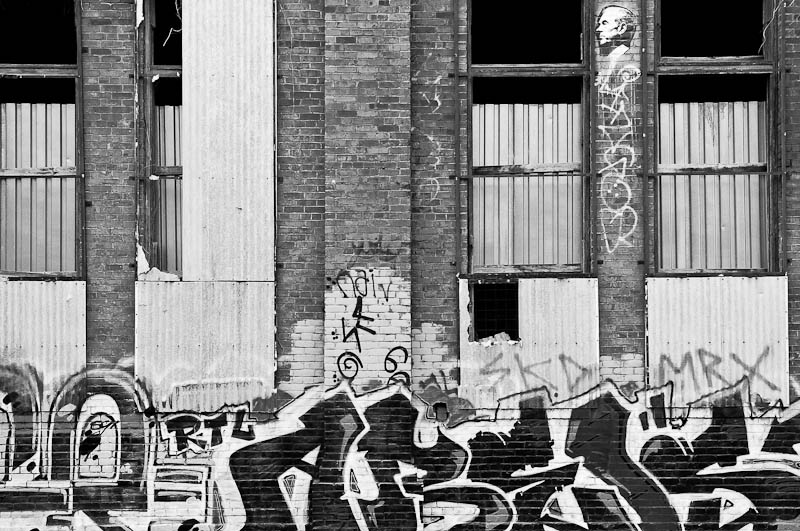
Anonymity - Austin Amtrak, 2010
Why do people tag buildings with graffiti? Why do people publish photography blogs? Fundamentally for the same reason: we fear being invisible, forgotten, unknown, overlooked; we fear that we may leave the world unmarked by our presence. Graffiti and blogging won’t help us much in the end, the walls we painted will fall down and our domain name registrations will lapse. In the short interlude that our signature is visible it will likely remain unrecognized by all but a handful but it is our small existentialist authentication for that brief time and those few.
But whose bust is that, high up on the right (detail below)? Who painted that there and why? The brickwork distorts the image but I don’t think it’s “W” so who is it? The profile looks familiar, I’m probably going to kick myself when I find out. Someone has me asking questions at least.
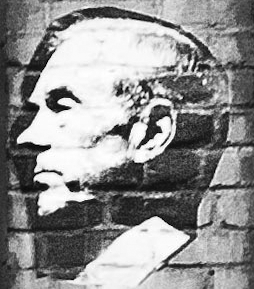
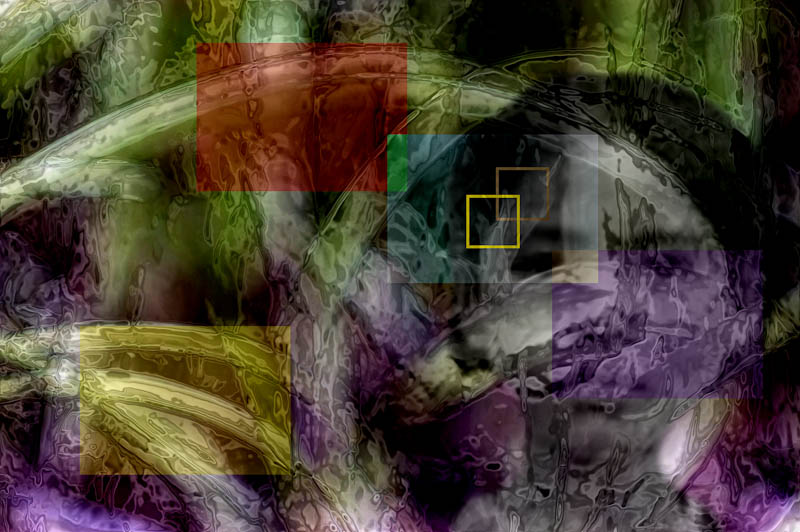
S-21 - Unknown Girl
and the blood of children ran through the streets
without fuss, like children’s blood.
from “I’m Explaining a Few Things” by Pablo Naruda
In her book, “The Discovery of Poetry”, Frances Mayes notes that we expect a poet to use a contrasting comparison after “like” but that Naruda tells us that there can be no simile with more impact than the repetition of “children’s blood.”
The blood of the children in these images did not run through the streets of Naruda ‘s Madrid but through the hallways of Chao Ponhea Yat high school in Phnom Penh, a high school converted by the Khmer Rouge into Security Prison 21 (S-21).
We do not know the names of these children. All we have are the numbers they were assigned and the photographs taken on their arrival at the prison. Of the 17,000 adults, youths and children that entered S-21 between 1975 and 1979 only 12 are known to have come out alive. Genocide by numbers: the paranoid Khmer Rouge destroyed their identities along with their lives needing only to catalog false confessions obtained by torture to justify their actions.
Yale University’s Cambodian Genocide Program (CGP) web site provides a searchable database of 5,000 prisoner photographs from S-21, almost all unidentified. All that remains of them is a number and a single black and white picture; 12,000 more do not have even that.
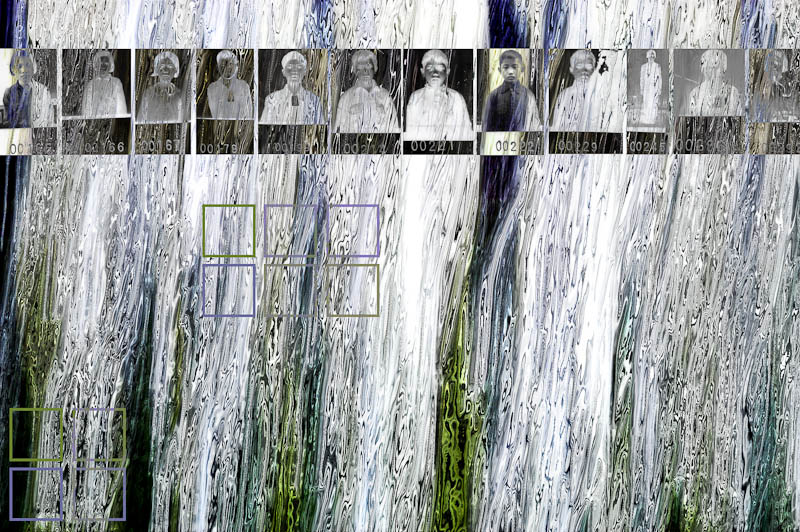
S-21 - Unknown Children
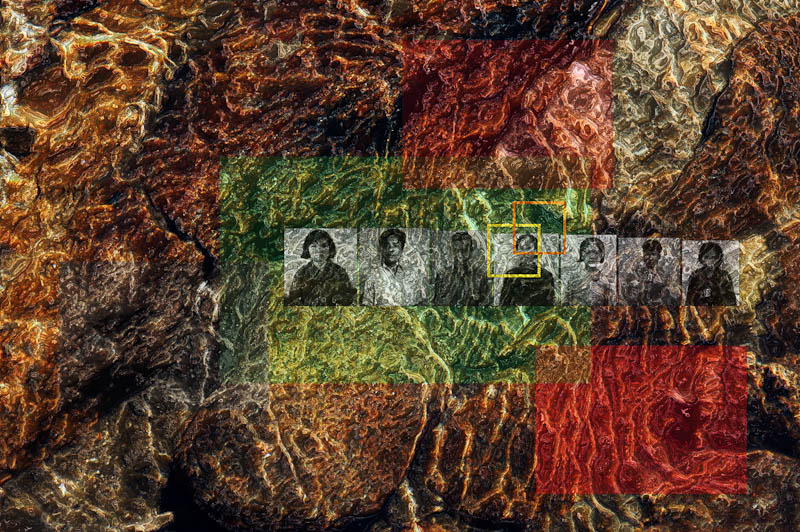
S-21 - Seven Unknown
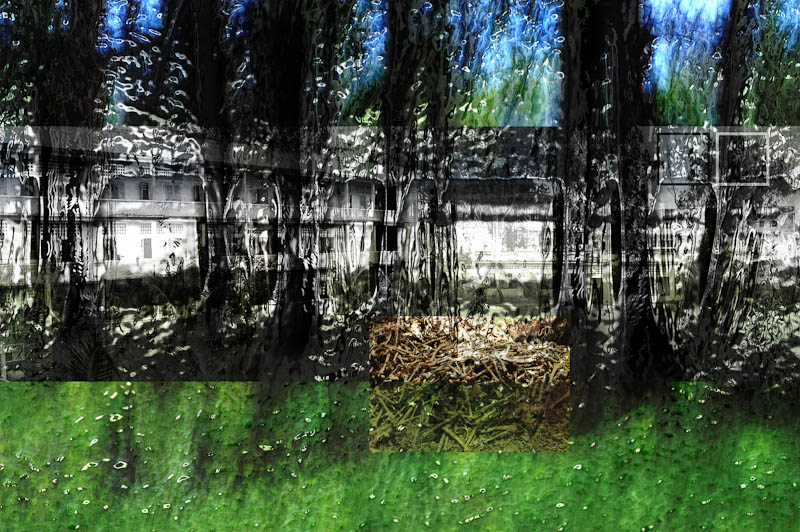
S-21 - A Phnom Penh high school
Chao Ponhea Yat high school, Security Prison 21, is today the Tuol Sleng Genocide Museum in Phnom Penh, Cambodia.
I made these pieces in 2003 but I have not published them until now. Seeing my own children in their eyes, I wanted somehow to mark and remember these kids that never grew up, give them a little bit more than just a number. The backgrounds, crying landscapes, come from the Trees, River, Grass, Ranch series made in the Colorado Rockies earlier the same year.
As with all the other images on this site, the profit from any sales will go to charity; for these pictures, Save the Children will always be the beneficiary.
Squaring with Google? No, not a rant about Google threatening privacy or innovation but an unexpected benefit from the Street View feature of Google Maps.
Almost nothing in the “Crown of Roses” image above is square with anything else. Working from memory in Lightroom, I know that the girl was walking up hill but surely the green utility box can’t be tilted so far off the vertical? If I use the side of the green box as a plumb line then the slope of the hill disappears, the girl looks to be headed for a busted nose on the sidewalk, and I lose 25% or more of the image to the crop! I compromise and post that to the Saturday Morning, Austin web gallery but I am not happy about it.
Today, in love with the rich colors, I decide to use the image for a blog posting but the angles are still nagging me: I want the picture to be true but how can I know for sure? If only I had taken a wide angle context shot to use as a reference! And then it occurs to me that this is a “street” photograph in a U.S. city and that I should therefore be able to find the location in Google Maps and compare with that …
Google’s street image capture for Austin was made a few years ago, before the skyline went through its latest growth spurt, but the mural was already there, cracks and all. You can see for yourself by bringing up Google Maps for 640 San Jacinto, Austin, TX and switching to Street View; the painted armadillo is walking on the level and the utility box, while perpendicular to the sidewalk, is significantly off vertical. I make the adjustment to match reality rather than my perception of it and that’s what you see here. The out-of-kilter angles only add to the surreal quality.
Now I am wondering what else I might use Google’s Street View for; scouting for locations maybe?